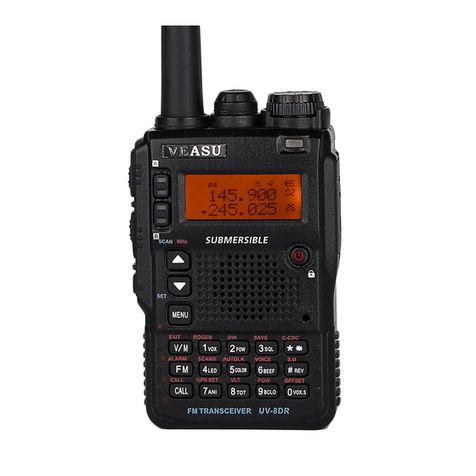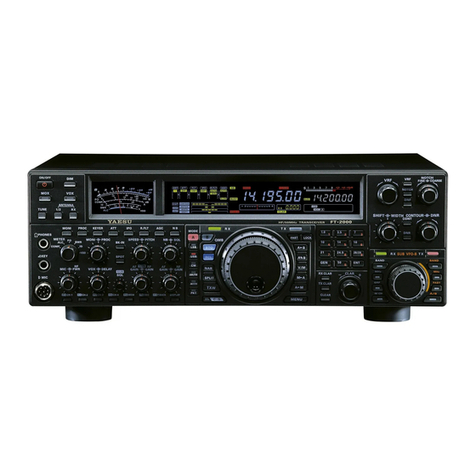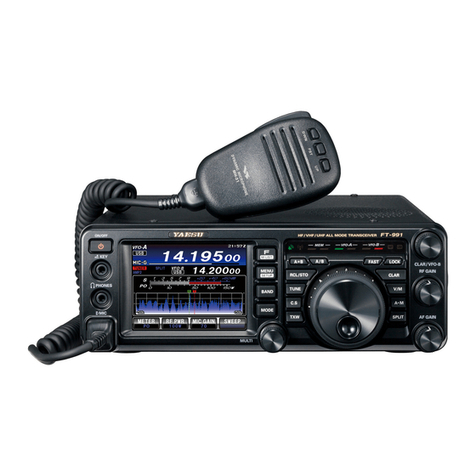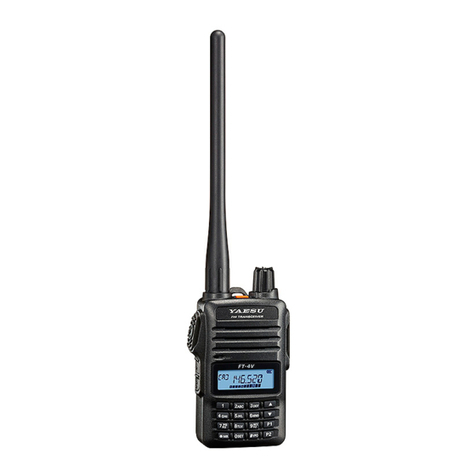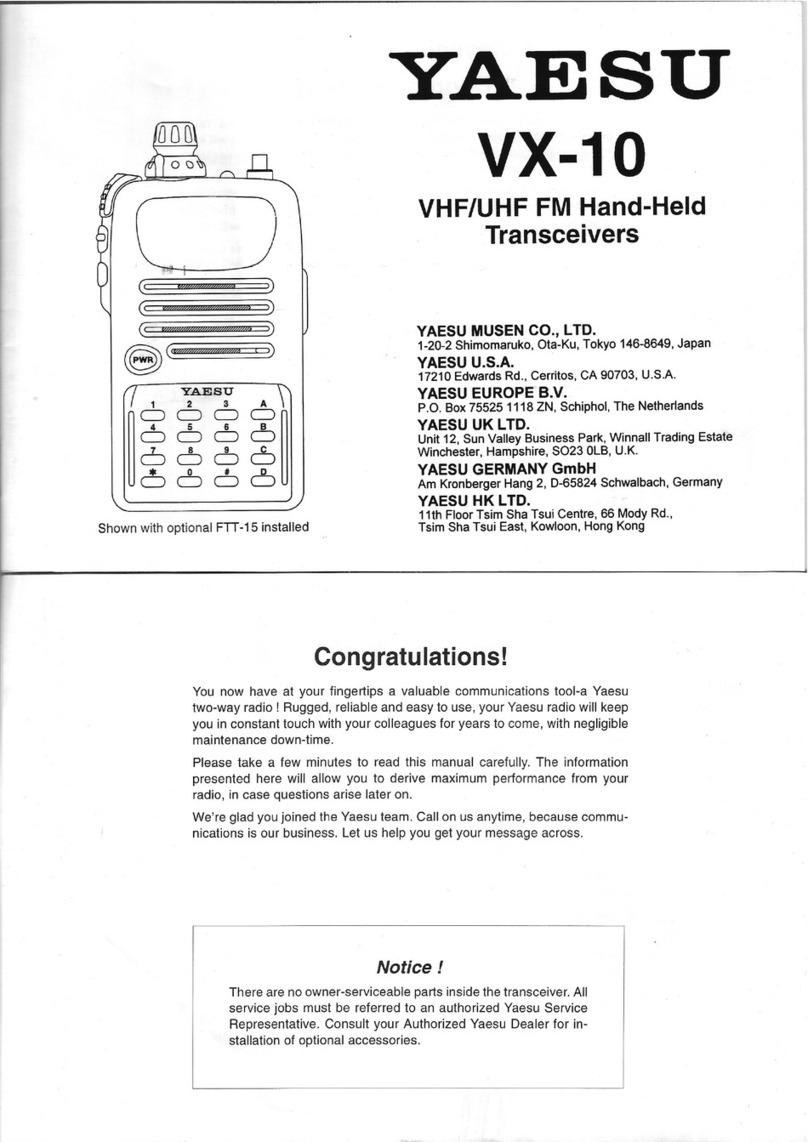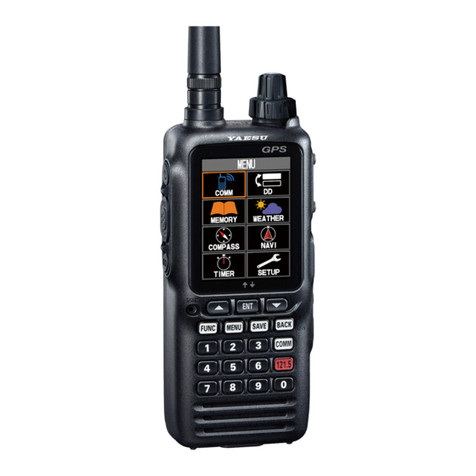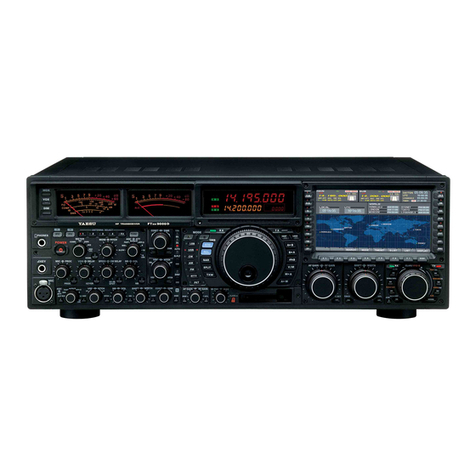VX-150 OPERATING MANUAL 7
To remove the battery, turn the radio off and remove any protective cases. Open the Bat-
tery Pack latch on the bottom of the radio, then slide the battery downward and out from
the radio while unfolding the Belt Clip.
Do not attempt to open any of the rechargeable Ni-Cd packs, as they could explode if
accidentally short-circuited.
If the battery has never been
used, or its charge is de-
pleted, it may be charged by
connecting the NC-72A/B/
C/F/U Battery Charger, as
shown in the illustration, to
theEXT DC jack. If only 12
~ 16 Volt DC power is avail-
able, the optional E-DC-5B or E-DC-6 DCAdapter (with its cigarette lighter plug) may
also be used for charging the battery, as shown in the illustration.
INSTALLATION OF FBA-25 (Option)ALKALINE BATTERY CASE
The optional FBA-25 Battery Case allows receive monitoring using six “AA” size Alka-
line batteries. Alkaline batteries can also be used for transmission in an emergency, but
power output will only be 300 mW, and battery life will be shortened dramatically.
To Install Alkaline Batteries into the FBA-25
rSlide the batteries into the FBA-25 as shown in the illustration, with the Negative [–]
side of the batteries touching the spring connections inside the FBA-25.
rUnlock the bottom plate by pushing the latch in the “Open” direction.
rInstall the FBA-25 as shown in the illustration, with the [+] side facing the bottom of
the transceiver.
rRe-lock the bottom plate by carefully pressing the latch cover back into its normal
operating position.
TheFBA-25 does not provide connections for charging, since Alkaline cells cannot be re-
charged. Therefore, the NC-72A/B/C/F/U, E-DC-5B, or E-DC-6 may safely be con-
nected to the EXT DC jack when the FBA-25 is installed.
Notes:
mThe FBA-25is designed for use only with AA-type Alkaline cells.
mIf you do not use the VX-150 for a long time, remove the Alkaline batteries from the
FBA-25, as battery leakage could cause damage to the FBA-25 and/or the trans-
ceiver.
Installation & Accessories


